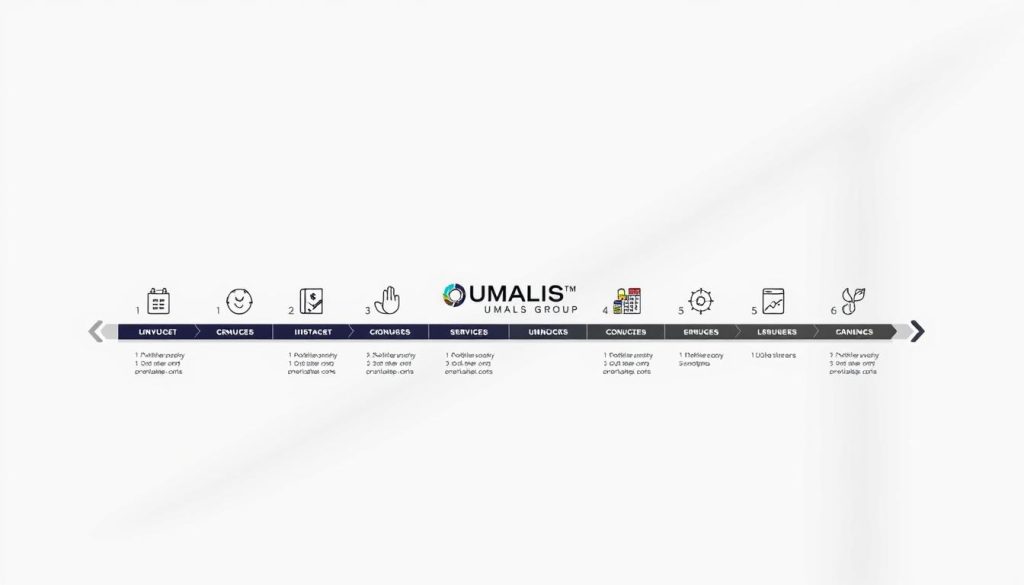As an independent professional, turning a client’s vision into a tangible result is both a challenge and an opportunity. Successful project delivery is about more than just completing tasks; it’s about bringing a concept to life efficiently and effectively.
Effective management of resources, including time, finances, and human resources, is crucial for achieving success in your projects. By mastering the art of project delivery, you can enhance client satisfaction, boost your reputation, and increase your earning potential.
Table of Contents
Key Takeaways
- Understand the fundamentals of project delivery to enhance your professional capabilities.
- Mastering resource allocation is critical for successful project outcomes.
- Effective project delivery directly impacts client satisfaction and your professional reputation.
- Implementing the right strategies and tools can significantly improve your project management skills.
- Achieving consistent success in project delivery can lead to increased opportunities and financial stability.
Understanding Project Delivery Fundamentals
Project delivery is more than just completing tasks; it’s about turning visions into tangible results. At its core, project delivery involves transforming a plan or idea into a reality, which requires a clear understanding of the project’s objectives, scope, and desired outcomes.
What Is Project Delivery and Why It Matters
Project delivery encompasses the entire process of taking a client’s requirements and turning them into valuable outcomes through structured planning, execution, and monitoring. For independent professionals, understanding project delivery fundamentals is crucial as it forms the foundation upon which all client work is built and evaluated. As noted by industry experts, « The significance of project delivery extends beyond just completing tasks—it directly impacts client satisfaction, your professional reputation, and your ability to secure future contracts. »
The importance of project delivery cannot be overstated. It is the key to differentiating yourself in competitive markets and delivering consistent value to clients. Effective project delivery requires both technical expertise in your field and strong project management capabilities to ensure all elements come together seamlessly.
Key Components of Successful Project Delivery
Successful project delivery consists of several key components, including clear scope definition, realistic timeline planning, resource allocation, risk management, and quality control measures. Independent professionals must master these fundamentals to deliver projects that meet client expectations and enhance their professional reputation.
Understanding the relationship between project scope, time, and cost—the project management triangle—is vital for making informed decisions when constraints change. By focusing on these key components and adapting to changes effectively, independent professionals can ensure success in their project delivery endeavors.
The Project Delivery Lifecycle for Independent Professionals

The project delivery lifecycle for independent professionals involves several key phases that ensure successful project execution. As an independent professional, understanding these phases is crucial for delivering projects that meet client expectations and achieve the desired outcomes.
Initiation and Planning Phases
The project delivery lifecycle begins with the initiation phase, where you define project goals, scope, and client expectations in clear, measurable terms. During the planning phase, you develop comprehensive project plans that include task breakdowns, resource allocation, timeline development, and risk assessment tailored to your limited resources.
Effective planning is critical for independent professionals, as it helps in creating a roadmap that guides the project from start to finish, ensuring that all aspects are considered and accounted for.
Execution and Monitoring Phases
The execution phase requires implementing the project plan while maintaining flexibility to adapt to changing client requirements or unexpected challenges. Monitoring progress is particularly critical for independent professionals who don’t have team members to provide oversight—establishing clear metrics and regular check-in points helps maintain control.
A well-executed project plan ensures that the project stays on track, and any deviations are addressed promptly, minimizing their impact on the overall project timeline.
Quality Assurance and Closure Phases
Quality assurance represents a vital phase where independent professionals verify that deliverables meet or exceed client expectations and industry standards before presentation. The closure phase involves formally completing the project, gathering client feedback, documenting lessons learned, and establishing foundations for potential future work with the client.
| Phase | Key Activities | Importance |
|---|---|---|
| Initiation | Define project goals, scope, and client expectations | Sets the foundation for the project |
| Planning | Develop project plans, task breakdowns, resource allocation | Critical for creating a project roadmap |
| Execution | Implement project plan, adapt to changes | Ensures project stays on track |
| Monitoring | Track progress, establish clear metrics | Maintains control and addresses deviations |
| Quality Assurance | Verify deliverables meet client expectations | Ensures quality and client satisfaction |
| Closure | Formally complete project, gather feedback | Finalizes project and documents lessons learned |
Essential Project Delivery Methods

Project delivery methods vary widely, each with its own strengths and ideal applications. Independent professionals must understand these different methods to select the most appropriate approach for each client project based on scope, timeline, and requirements.
Traditional Waterfall Approach
The Traditional Waterfall approach is a linear, sequential methodology that works well for projects with clearly defined requirements and minimal expected changes. It’s like a series of stepping stones where each step must be completed before moving to the next. This method is used in various industries, such as product development, where tasks are completed one after another, following a predetermined sequence.
Agile Project Delivery
For projects with evolving requirements or frequent client feedback, the Agile project delivery method provides flexibility through iterative development and regular adaptation. Agile is akin to a series of short, focused sprints in a race. It’s a dynamic and collaborative method used in various fields, like software development, where teams work closely together to incrementally deliver small, valuable project pieces.
Hybrid Delivery Methods
Hybrid delivery methods allow independent professionals to combine elements of both Waterfall and Agile approaches, creating customized frameworks that address specific project needs and client preferences. A hybrid approach is like blending your favorite flavors to create a unique recipe. It combines elements from different project delivery methods, allowing project managers to customize the process to suit their project’s specific needs and objectives.
By understanding these essential project delivery methods, independent professionals can choose the best approach for their projects, ensuring successful delivery and client satisfaction.
Creating an Effective Project Delivery Plan
An effective project delivery plan serves as a roadmap, guiding independent professionals through the complexities of their projects. This plan is essential for navigating the project lifecycle, from initiation to completion, ensuring that all aspects are well-coordinated and executed efficiently.
Defining Project Scope and Objectives
Defining the project scope and objectives with precision is critical. It helps establish clear boundaries for the project, preventing scope creep and ensuring that client expectations are properly managed. A well-defined scope statement outlines what is included and excluded from the project, providing a clear direction for the project team.
- Clearly articulate project goals and deliverables
- Establish measurable objectives
- Define the project scope statement
Resource Allocation and Timeline Development
Resource allocation and timeline development are crucial components of the project delivery plan. Independent professionals must identify the resources needed, when they are required, and how to acquire them efficiently. The timeline should account for the realities of working independently, including buffer time for unexpected challenges and clear milestones to track progress.
Risk Assessment and Mitigation Strategies
Risk assessment is particularly important for independent professionals who lack the safety net of a larger organization. Identifying potential risks early allows for proactive mitigation strategies, reducing the likelihood of costly setbacks. A comprehensive risk management plan should be integrated into the overall project delivery plan.
- Identify potential risks and threats
- Develop mitigation strategies
- Monitor and review risk management plans
By following these steps and creating a comprehensive project delivery plan, independent professionals can ensure that their projects are well-managed, risks are mitigated, and client expectations are met. This plan serves as a valuable tool for setting client expectations and demonstrating professionalism from the outset of the engagement.
Building a High-Performing Project Team as a Solo Professional

Effective project delivery as an independent professional relies heavily on assembling a skilled and collaborative team. While you may work alone, successful projects often require a network of collaborators, subcontractors, and specialists who can bring specific expertise to your projects.
Identifying Key Collaborators and Partners
Identifying the right collaborators involves assessing not only their technical skills but also their reliability, communication style, and alignment with your professional standards and values. As a solo professional, you must be adept at quickly forming effective temporary teams that can come together for specific projects and deliver cohesive results.
- Assess potential collaborators’ technical skills and expertise.
- Evaluate their reliability and past performance.
- Consider their communication style and compatibility with your approach.
Establishing Clear Roles and Responsibilities
Once you’ve identified your key collaborators, establishing clear roles and responsibilities from the outset is crucial. This prevents confusion, overlap, and gaps in project execution when working with external partners. By defining each team member’s role, you can ensure a smooth project delivery process.
- Clearly define each collaborator’s role and responsibilities.
- Establish a standardized onboarding process for new collaborators.
- Foster a culture of respect and trust among team members.
By focusing on building a strong team and establishing clear processes, you can enhance your ability to deliver successful projects as a solo professional. This approach not only improves project delivery but also helps you build a trusted network of collaborators for future projects.
Lean Project Delivery Principles for Independents
For independent professionals, adopting lean project delivery principles can be a game-changer in maximizing value and minimizing waste. At its core, Lean in project delivery is a mindset geared towards creating a culture of respect and continuous improvement with the aim of generating maximum value for customers and stakeholders by identifying value and eliminating waste in processes.

Eliminating Waste in Your Project Processes
Lean project delivery principles offer independent professionals powerful methodologies to maximize value while minimizing waste in their project processes. For solo professionals with limited resources, eliminating waste in project processes is particularly valuable—this includes reducing unnecessary meetings, streamlining documentation, and focusing on high-value activities. Identifying and eliminating the seven common wastes (overproduction, waiting, transportation, overprocessing, inventory, motion, and defects) helps independent professionals optimize their workflow and increase profitability.
Continuous Improvement Strategies
Continuous improvement strategies enable independent professionals to refine their project delivery approaches over time, learning from each engagement to enhance future performance. Implementing regular retrospectives after project completion allows independent professionals to identify what worked well and what could be improved for similar projects in the future. Lean principles emphasize client value—independent professionals should regularly assess which activities directly contribute to client-defined value and prioritize those in their processes.
The flexibility of lean methodologies makes them particularly suitable for independent professionals who need adaptable frameworks that can scale up or down based on project requirements. By adopting lean project delivery principles, independent professionals can significantly enhance their project management capabilities, leading to improved client satisfaction and increased profitability.
Overcoming Common Project Delivery Challenges
Successfully delivering projects as an independent professional requires overcoming several common challenges. As an independent professional, you face unique project delivery challenges that demand specific strategies to maintain client satisfaction and project profitability.
These challenges can be broadly categorized into three key areas: managing scope creep and timeline delays, handling budget constraints, and addressing communication breakdowns.
Managing Scope Creep and Timeline Delays
Managing scope creep is particularly challenging for solo professionals who may feel pressured to accommodate client requests. Establishing clear change management processes and documentation is essential. To avoid timeline delays, implementing buffer time, clear milestone tracking, and early warning systems can help prevent cascading delays.
Handling Budget Constraints
Budget constraints are common challenges that independent professionals must navigate. Developing accurate estimation skills, monitoring expenses closely, and communicating proactively with clients about financial implications can help manage budget effectively.
Addressing Communication Breakdowns
Communication breakdowns can derail even well-planned projects. Establishing consistent communication protocols, documentation standards, and feedback mechanisms from project initiation can help mitigate this risk.
By understanding these common project delivery challenges and implementing strategies to overcome them, independent professionals can ensure successful project outcomes and maintain a competitive edge in the market.
Essential Tools and Technologies for Project Delivery
Independent professionals can enhance their project delivery capabilities by adopting the right set of tools and technologies tailored to their specific needs and budget constraints.

Project Planning and Tracking Software
Project planning and tracking software provides independent professionals with structured frameworks to organize tasks, monitor progress, and maintain visibility across multiple concurrent projects. Tools like SafetyCulture enable professionals to streamline project workflows, conduct inspections, and raise actions on hazards during the construction phase.
Communication and Collaboration Platforms
Communication and collaboration platforms enable seamless interaction with clients and project collaborators, creating centralized information hubs that reduce misunderstandings and information gaps. These platforms are crucial for maintaining clear and consistent communication throughout the project lifecycle.
Documentation and Reporting Tools
Documentation and reporting tools help independent professionals maintain professional standards, create consistent deliverables, and build templates that can be reused across similar projects. SafetyCulture, for instance, allows users to generate custom reports in various formats and maintain a centralized cloud-based dashboard for all project information.
Measuring Project Delivery Success
Effective measurement of project delivery success enables independent professionals to refine their processes, ensuring better outcomes for their clients. This involves defining and tracking key performance indicators (KPIs) that align with project objectives.
Key Performance Indicators for Independent Professionals
For independent professionals, relevant KPIs might include on-time delivery rate, budget adherence, client satisfaction scores, and scope management effectiveness. Tracking both process metrics (how efficiently you worked) and outcome metrics (what value was delivered) provides a comprehensive view of project delivery performance.
- On-time delivery rates indicate the ability to meet deadlines.
- Budget adherence shows how well costs are managed.
- Client satisfaction scores reflect the quality of service.
- Scope management effectiveness ensures that projects stay on track.
Client Satisfaction and Feedback Methods
Client satisfaction is a critical measure of project success, requiring systematic feedback collection through surveys, interviews, or structured review sessions. Effective measurement systems should balance quantitative metrics (time, cost, quality) with qualitative assessments (client experience, relationship strength, perceived value).
By establishing baseline performance metrics and tracking improvements over time, independent professionals can demonstrate professional growth and increasing value to clients. This approach helps in justifying rates or fee structures and enhances overall project delivery success.
Conclusion: Mastering Project Delivery as an Independent Professional
For independent professionals, project delivery is not just about completing tasks; it’s about creating value for clients and building a sustainable business. Mastering project delivery requires a combination of structured methodologies, appropriate tools, and a continuous improvement mindset.
By implementing the principles outlined in this guide, you can enhance your project management capabilities, increase client satisfaction, and establish a reputation for reliability and excellence. Key to this success is developing a personalized project delivery framework that balances structure and flexibility, allowing you to adapt to different client needs while maintaining robust systems.
Investing time in developing your project delivery skills will yield dividends through increased efficiency, reduced stress, and higher client satisfaction. By focusing on continuous improvement and viewing each project as an opportunity to refine your approach, you can achieve sustainable success in your practice.
FAQ
What are the key elements of a successful project management plan?
A successful management plan involves defining the scope, setting clear objectives, allocating resources, developing a realistic timeline, and establishing a budget. It also requires identifying potential risks and developing mitigation strategies.
How can independent professionals effectively manage their time and resources?
Independent professionals can manage their time and resources by prioritizing tasks, using project planning and tracking software, and establishing clear communication channels with clients and collaborators. This helps ensure that tasks are completed efficiently and effectively.
What are some common challenges faced by independent professionals in managing their work, and how can they be overcome?
Common challenges include scope creep, timeline delays, and budget constraints. To overcome these, independent professionals can establish clear scope statements, set realistic schedules, and develop contingency plans. Effective communication and collaboration with clients and team members can also help mitigate these issues.
How can independent professionals ensure the quality of their work and maintain client satisfaction?
Independent professionals can ensure quality by establishing clear quality assurance processes, setting high standards, and continuously monitoring their work. They can also solicit client feedback and use it to improve their services and maintain high levels of client satisfaction.
What are some essential tools and technologies that can help independent professionals streamline their work and improve productivity?
Essential tools and technologies include project planning and tracking software, communication and collaboration platforms, and documentation and reporting tools. These can help independent professionals manage their work more efficiently, collaborate with clients and team members, and maintain high levels of productivity.
How can independent professionals measure the success of their projects and evaluate their performance?
Independent professionals can measure success by tracking key performance indicators (KPIs), such as client satisfaction, project timeline, and budget adherence. They can also solicit client feedback and use it to evaluate their performance and identify areas for improvement.





